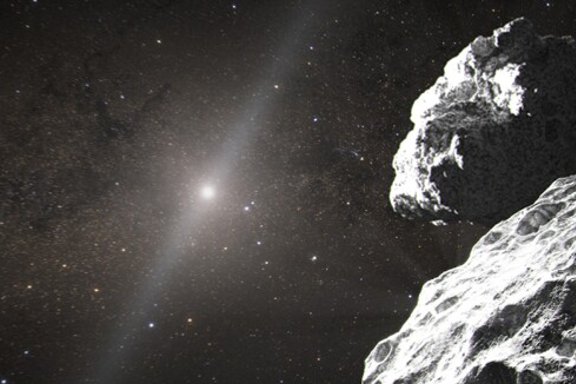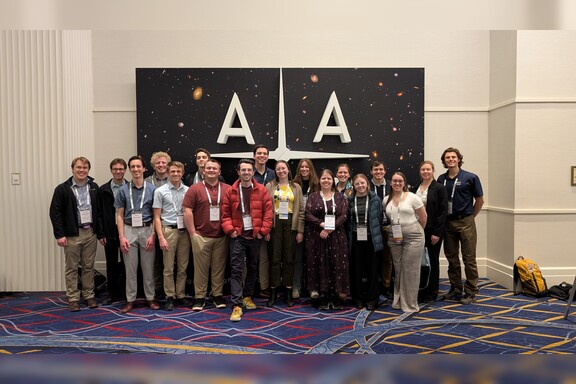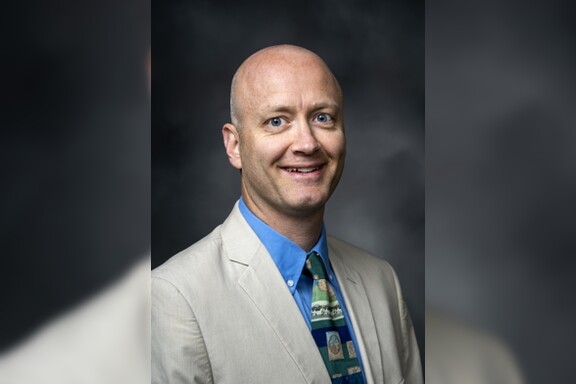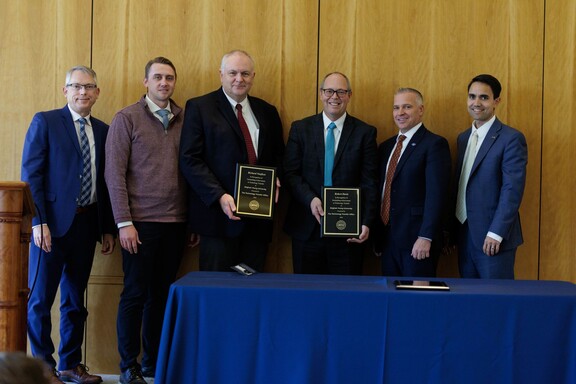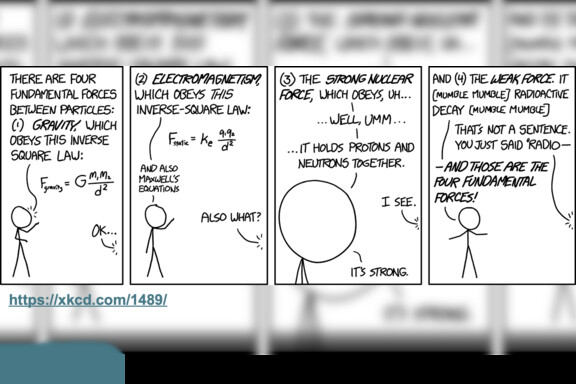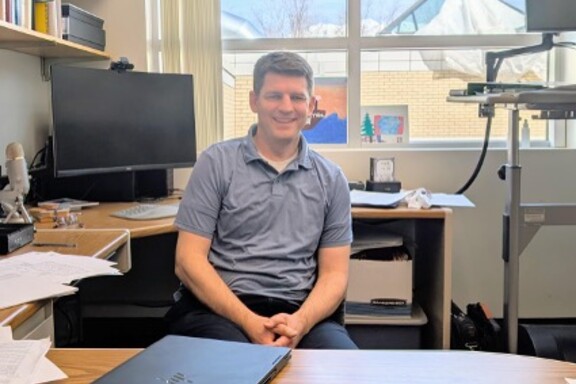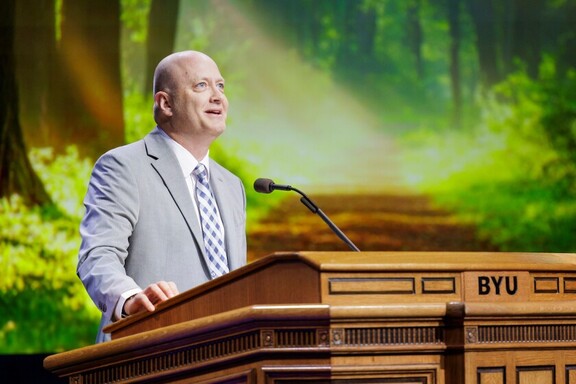By Mara Dille
A recent research adventure took Dr. Traci Neilsen and two students to the North Atlantic Ocean. Neilsen, an associate professor of physics at BYU, and her team apply artificial intelligence to noises in the ocean to classify the seabed. To further their research, they participated in a seabed characterization experiment aboard the research vessel Neil Armstrong in May 2022.
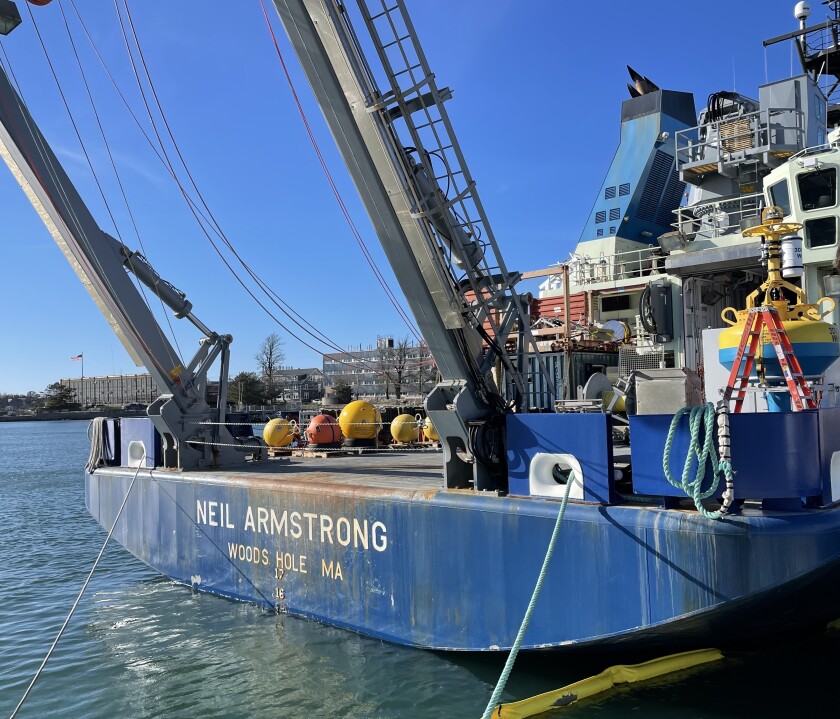
Sound navigation and ranging (sonar) is essentially the use of sound waves to sense objects underwater. Active sonar acts like echolocation where a sound is sent out and reflects off objects in the water. By analyzing the reflected sound wave, unknown objects or distances between objects can be identified. Active sonar is powerful but also makes your location obvious to others. When stealth is needed, passive sonar is used. Instead of actively sending out sound waves and analyzing the reflection, passive sonar utilizes sounds already present within the very noisy ocean.
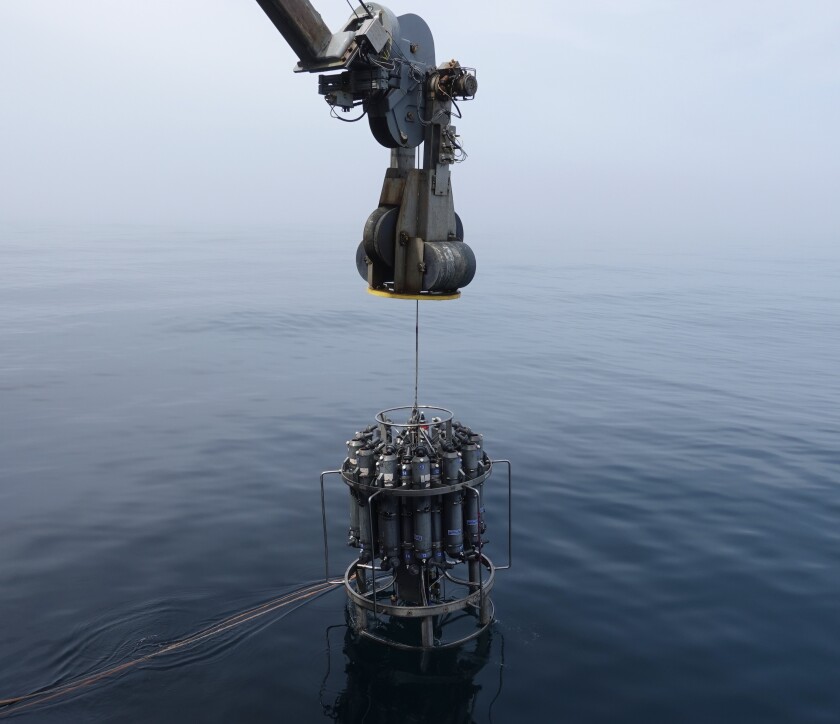
This realm of passive sonar is where Neilsen’s research is used. Large data sets of ocean sounds are used to create predictive deep learning models for determining seabed classification, detecting sound sources, and predicting their location. Information about the seabed is encoded in the sound as it travels in the ocean and reflects off the seabed sediment. As Neilsen explained in her 2021 BYU devotional, different types of sediment interact with sound waves differently. Sediment with higher levels of mud absorbs the sound, while sandier sediments reflect more of the wave back into the water. These descriptions are simplifications of the infinite variety of types of seabeds in the ocean but effectively illustrate how the seabed impacts the sound.
Neilsen tests these deep learning algorithms on data acquired through seabed characterization experiments conducted by several universities and institutions including Woods Hole Oceanographic Institute (WHOI) and Scripps Institute of Oceanography (SIO). Due to this collaboration, she was invited to join 11 days of their month-long experiment aboard WHOI’s research vessel Neil Armstrong, which is a boat specially designed for oceanic research.
The two students Neilsen invited to join her have different backgrounds and work experiences. Neilsen recruited Stephen Amos, a computer science major, to help with coding the machine learning algorithms. He ran into Dr. Neilsen the day after her devotional in June 2021, and she invited him to join her research group. He said it only took him “walking the length of the building” to decide to accept. Alexandra Hopps, the second student Neilsen invited, is an applied physics major who is doing experimental underwater acoustics research in Neilsen’s lab.
As they departed from Woods Hole, Massachusetts and headed into the North Atlantic, Amos and Hopps quickly realized they were the only undergraduate students onboard, as only two other professors had brought their graduate students to assist in the experiments. Neilsen shares that BYU is unique among other institutions in bringing undergrads along to research conferences and experimental learning opportunities—such as this research trip. President Worthen has recently pushed to expand student experimental learning opportunities across campus. In his August 2022 opening devotional, he explained a push for enhancing “the quality and quantity of experiential learning—activities in and out of the classroom, including faculty-led, student-centered scholarship and student employment.” This faculty-led, student-centered focus is what made all the difference for Hopps’s and Amos’s experience.
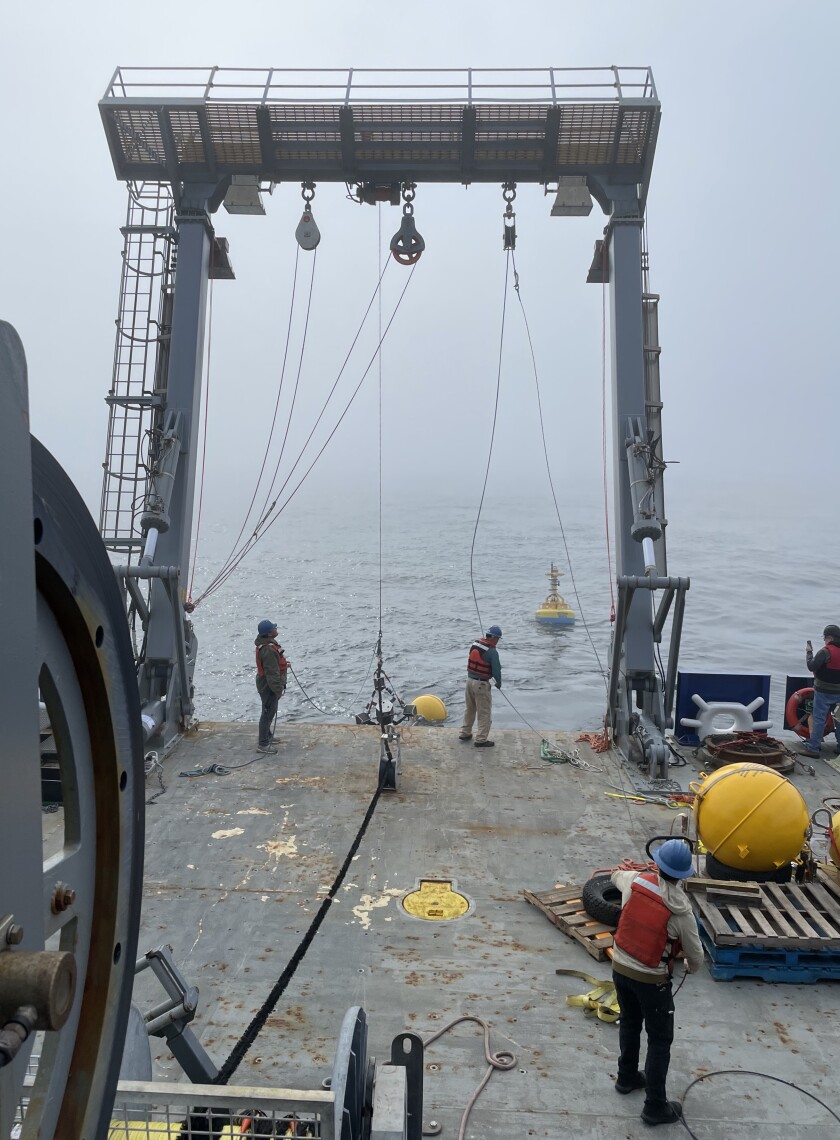
The shock of being the only undergrads did not last long for Hopps and Amos, and they were quickly assigned to help with various experiments. Hopps shares how they often assisted with collecting data late into the night, and once their experiment even ran until 4 a.m. The data collection included operating the CTD sensors for measuring the conductivity, temperature, and depth of the water, recording the GPS location during experiments, and watching for marine mammals. Part of one experiment included setting off loud sounds underwater that were recorded by the microphones under the surface. Out of concern for the animals whose echolocation inspired sonar technology, two students were always assigned to whale watching duty. These students ensured that if any whales were spotted during the experiment, the experiments would pause until the whales were a sufficient distance away to not disturb them.
The students discovered more than just whales aboard the Neil Armstrong. Hopps shared that her trip aboard the boat, and the interactions with the professors and grad students, has inspired her to consider pursuing a graduate degree. Although she would love to stay at BYU and continue studying with Dr. Neilsen, her horizons were broadened through these interactions, and she has gained the confidence to apply to different graduate programs. Her desire to pursue higher education was also inspired by the female graduate students that were present. In fact, Hopps was surprised by the fact that with herself included, there were more female than male students.
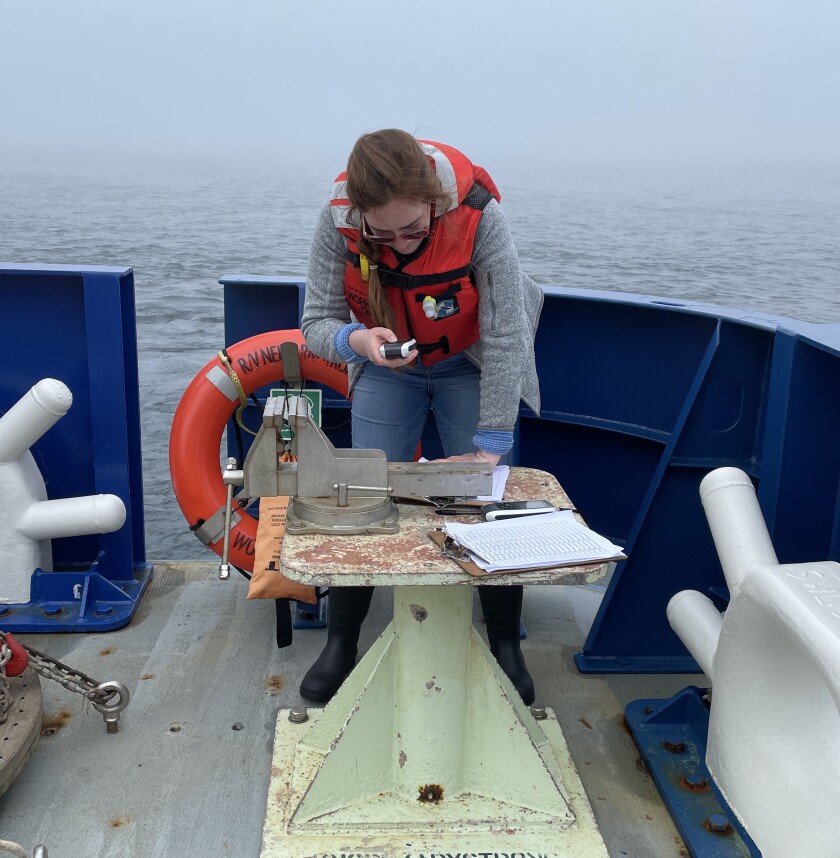
Hopps’s original inspiration comes from her research advisor–the woman that invited her on the trip and continually invites her to expand her horizons. Neilsen inspires not just through her encouraging words to students but also through her example of perseverance and her nonlinear career path. She dove back into underwater acoustics after taking a break from full-time physics research while her children were growing up. After a 12-year gap, Neilsen is grateful to have been invited into this large collaboration as she jumped in feet first into machine learning applications in underwater acoustic seabed classification. Closing this gap wasn’t easy for Neilsen. She shares “It’s not that I haven’t been scared to death tons of times at not knowing what is coming next or if things would work out, but that’s how it goes”, reminding us that the journey of discovery is not an easy one. But it’s not one we have to journey alone. Neilsen shares that her family, her students, and fellow researchers have made her journey “better than [she] ever could have hoped.” Her invitation to her students is the same for all of us—experience the joy of discovering together.
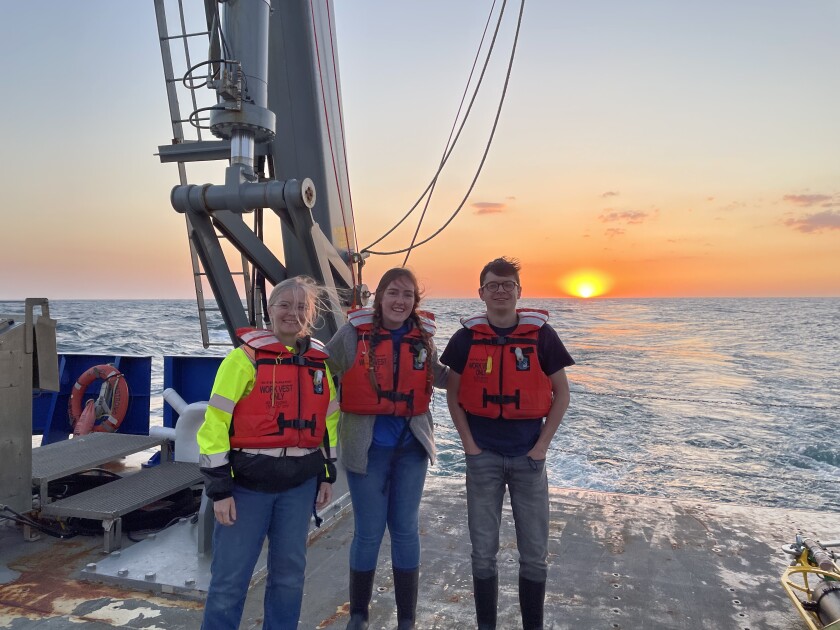
More Information on This Article
News and Events
